Anodes lose material around the fastener much faster than elsewhere on the anode. For the same reason the anode corrodes in the first place – it is protecting the more noble underwater hardware from corrosion – the anode equally protects its noble built-in fasteners, using up valuable anode material in the place it is needed most: around the fasteners. Often, despite the anode having plenty of meat left, the fasteners fall out.
In anticipation of the anode losing material around the fasteners, the anode can be painted with Tefgel, nail polish, epoxy primer, Propspeed, or even Lanocote in a small area around the fastener position. Applying Tefgel on the fasteners also helps isolate the stainless fasteners from the anode material, and helps to reduce the galvanic potential of the fasteners. Be advised: anywhere a waterproof coating is applied, the anode will be isolated and not protecting your metal hardware. Thus, be careful not to isolate too much of the anode, as this could cause the anode to be inert and would result in other more expensive hardware getting corroded.
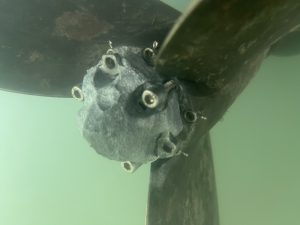
Martyr Brand anode with proper inner retaining ring
Martyr brand Maxprop anodes have a built-in steel retaining ring for the purpose of securing the anode after the anode has wasted away. On inferior Maxprop anodes by other brands, the anode will simply corrode around the fasteners, turning into a loose chunk of metal on the end of the Maxprop. I have seen this vibrating chunk of anode actually bend and break off the anode fasteners inside the Maxprop during its escape from in between the fasteners.
Aluminum anodes, for some reason, suffer less from this issue of losing more material around the fasteners. Aluminum anodes tend to corrode more evenly, showing a consistent layer of pitting and “beehive” holes all around the anode. For this reason I use primarily aluminum anodes in salt water.
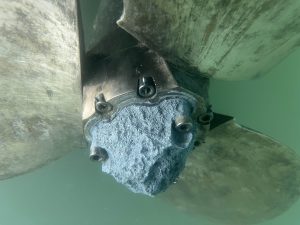
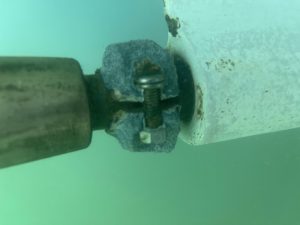
Anode material: Aluminum or Zinc
Certain situations end up with a combination of zinc and aluminum. For example, a Gori propeller on a Yanmar Saildrive: Because Gori’s original manufacturer anodes are zinc, while Yanmar’s original manufacturer anodes are aluminum, many boats end up with a zinc anode on the Gori propeller and an aluminum anode on the Yanmar Saildrive. I have not seen any bad outcomes from this, but I have heard experienced boaters warn that combining anode materials may result in corrosion problems because of the difference in galvanic activity between aluminum and zinc.
If you are checking the anodes frequently and are able to have them replaced easily, this is not a concern. After a few months you might see that one anode has corroded while the other has been neutralized by its relationship to the other anode. However, if the boat is going to be sitting unchecked for several months, it would be wise to choose one anode material throughout the entire boat for peace of mind.
Aluminum anodes cost about 10% to 20% less than zinc anodes, but these prices fluctuate.
For certain vessels, aluminum anodes are unavailable. For example, large transom plate anodes on a power boat. In this case, a similar model of anode can be modified to fit, or custom anodes can be fabricated.
In the video of the aluminum Yanmar anode and zinc Gori propeller anode, the aluminum is doing its job while the zinc is doing very little. This would be esaily explained by looking at the galvanic scale of metals, in which zinc anodes are more noble than aluminum anodes. In this case, the zinc Gori collar is not wasting away very much, but notice it is still corroding around the fasteners, resulting in a loose, rattling, ineffective zinc. These fasteners need to be treated with Tefgel or Lanocote at the very least. Even better would be to convert to one single anode material – aluminum being the best all-around choice. What about fresh vs saltwater use?
In fresh water, I have observed that aluminum anodes work better than zinc anodes. Martyr brand sells their aluminum anodes as “fresh OR salt water” while their zinc anodes are sold “for salt water only.” For “fresh water only” usage, magnesium anodes are recommended. However, DO NOT bring your magnesium anodes into salt water. I have seen a professional boatyard mix up their anodes and accidentally install a magnesium anode on a salt water boat’s propeller shaft. When the boat was splashed, the folding Martec propeller turned to dust within about 4 months, before I had the chance to find this and fix the problem.
Moving zincs from fresh to saltwater
Zinc anodes tend to develop a coating of passivated material during exposure to freshwater. When a salt-water boat spends more than a few weeks up a freshwater river or lake, zinc anodes will slowly become “polished” with a coating of inert, crusty, white material, until they are completely ineffective. Upon return to salt water, zinc anodes must be scraped and brushed clean to expose fresh zinc material, otherwise there is a high chance of corrosion due to the zinc anodes being isolated and inactive, causing the next metal in the chain to take on the role as the sacrificial material. Note that in San Francisco Bay, freshwater layers can develop during and after heavy rain. In the heavy rains of 2022/2023, boats with zinc anodes within a foot of the surface suffered from passivated zincs.
Keywords: anode fasteners, anode material, zinc anodes, aluminum anodes, freshwater anodes, saltwater anodes, galvanic activity, anode corrosion, anode effectiveness, anode maintenance, freshwater to saltwater transition, passivated material, propeller corrosion protection, saildrive corrosion protection, gori propeller, Yanmar Saildrive, transom plate anodes, custom anodes, magnesium anodes, Martyr brand anodes, anode corrosion prevention, anode surface preparation
Related Articles
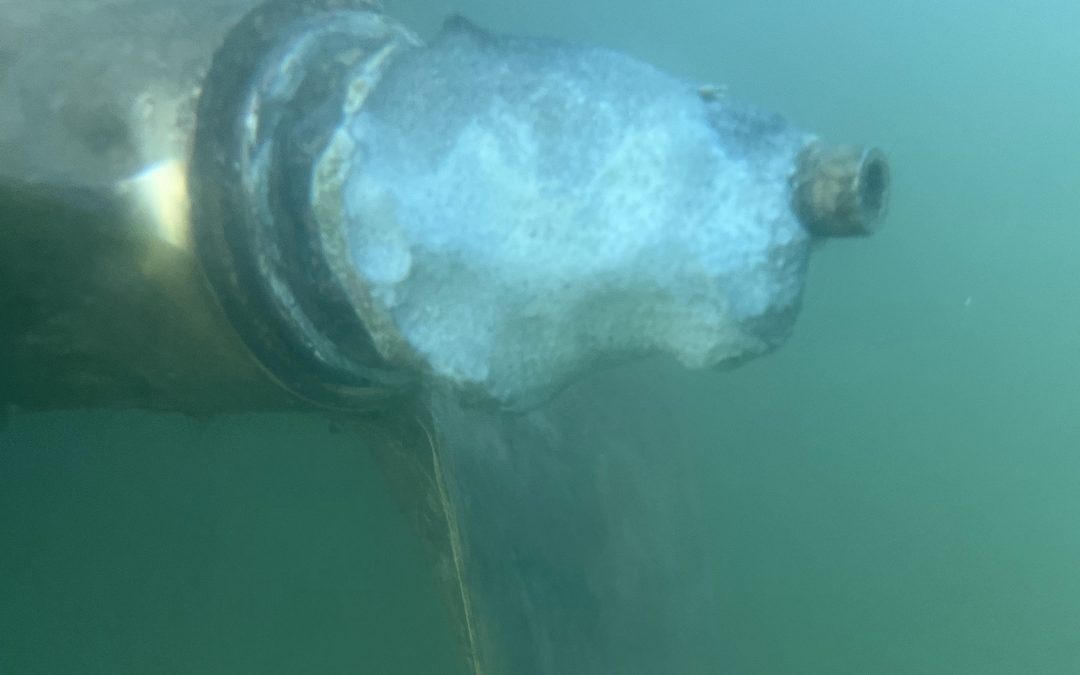
How to secure “Propnut” style anodes with lock washers
Have you ever had an anode fall off your...
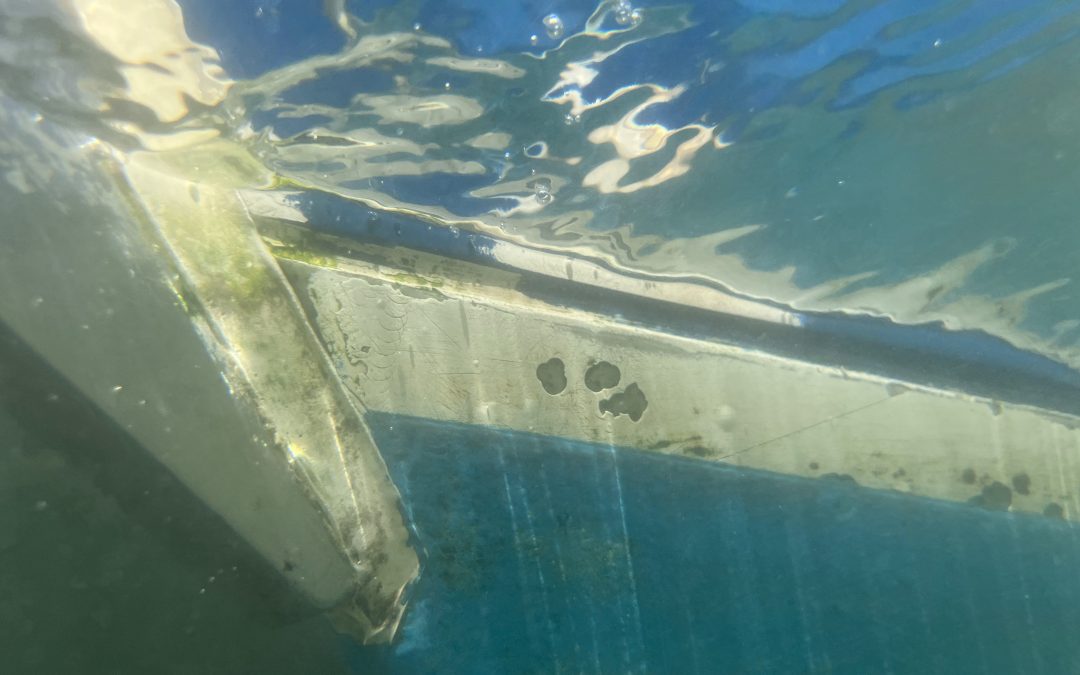
Bootstripe Submerged in Water
Have you ever noticed how the bootstripe...
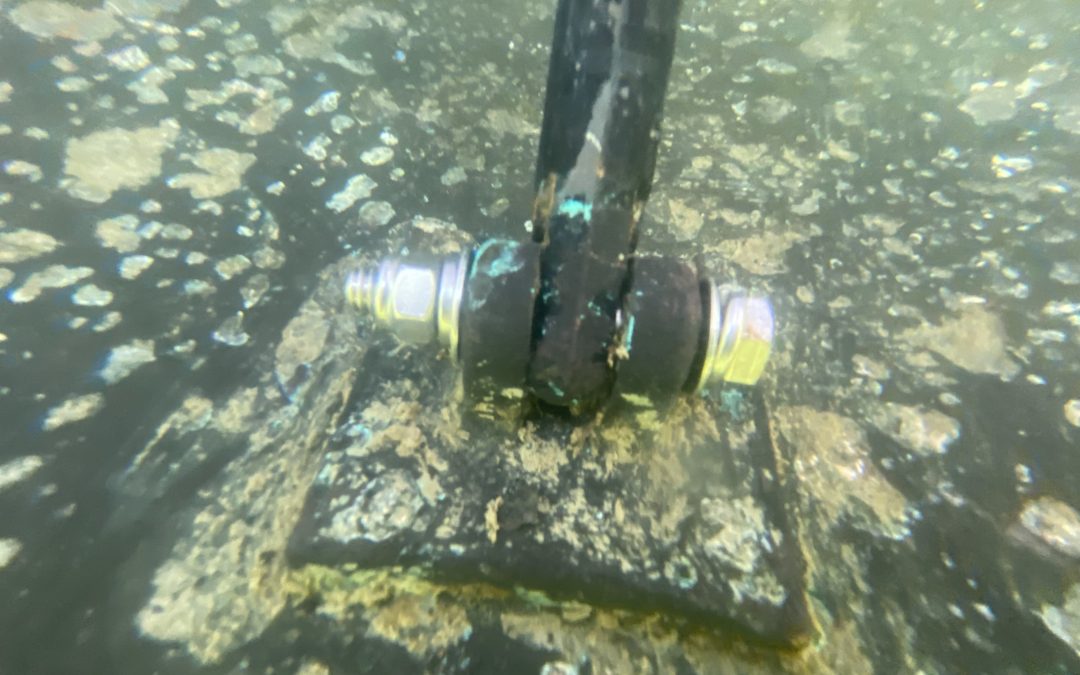
Backing Down can break Trim Tab connections: how to repair and how to avoid
One problem that seems to crop up time and time...
Ask Lowell
LH Marine serves all marinas and homes in the SF Bay Area.
Phone: (510) 470 – 9220
